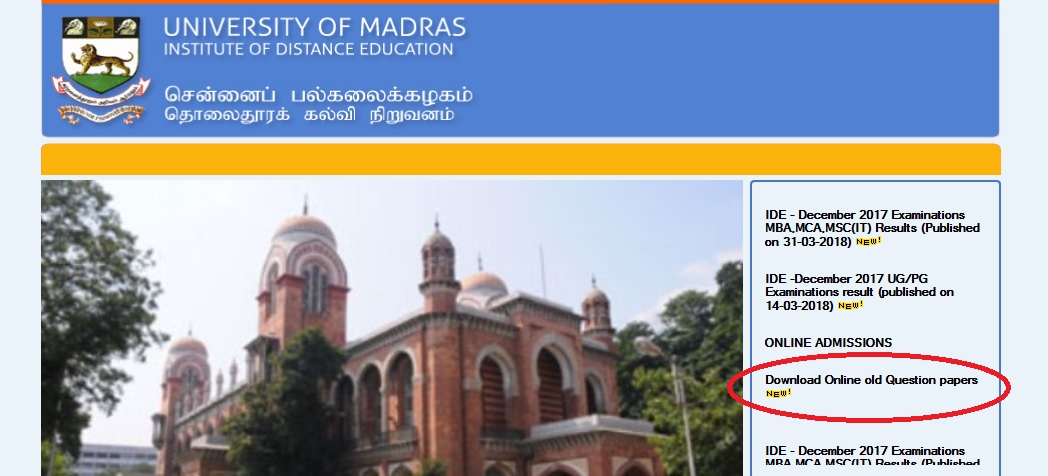Operating Systems & Microprocessors B.C.A Question Paper : ideunom.ac.in
University : University of Madras
Degree : B.C.A
Department : Computer Application
Subject :Operating Systems & Microprocessors
Document type : Question Paper
Website : ideunom.ac.in
Download Previous/ Old Question Paper :
OCT 2013 :https://www.pdfquestion.in/uploads/ideunom.ac.in/6810-._DEC2013_uid46436UCCF.pdf
OCT 2012 :https://www.pdfquestion.in/uploads/ideunom.ac.in/6810-._DEC12_uid46436%20UCCF.pdf
May 2013 :https://www.pdfquestion.in/uploads/ideunom.ac.in/6810-._MAY2013_UID46436%20UCCF.pdf
OCT 2011 :https://www.pdfquestion.in/uploads/ideunom.ac.in/6810-d11._QBNEW_uid46436%20UCCF.pdf
May 2011 :https://www.pdfquestion.in/uploads/ideunom.ac.in/6810-._MAY2011_uid46436%20UCCF.pdf
IDEUNOM Operating Systems Question Paper
OCTOBER 2011 U/ID 46436/UCCF
Time : Three hours
Maximum : 100 marks
PART A — (10 × 3 = 30 marks)
Answer any TEN questions.
Related / Similar Question Paper :
IDEUNOM BCA Resource Management Techniques Question Paper
1. Define : Dynamic loading. Dynamic loading
2. Define : File pointer. File pointer –
3. State the disadvantages of linked allocation method in disk space allocation process.
4. What is meant by buffering? Buffering
5. What are the four levels of security to protect the system?
6. What is the difference between XRA and XRI instructions?
7. What are the three categories of digital to analog convertors?
8. Difference between RAM and ROM.
9. Define Macro assembler. Macro assembler
10. What are the services available in OS?
11. State the two options to terminate the process during the occurrence of deadlock.
12. What is meant by OS?

PART B — (5 ´ 6 = 30 marks)
Answer any FIVE questions.
All questions carry equal marks.
Each answer should not exceed 200 words.
13. Explain briefly about OS services. OS Services
14. Describe deadlock prevention. Deadlock prevention
15. Explain about IO mapped memory. IO mapped memory
16. Write about Data transfer instructions.
17. Explain Free Space Management (FSM).
18. Explain Counters and time-delays. Counters and time-delays .
19. Explain about contiguous allocation.
PART C — (4 ´ 10 = 40 marks)
Answer any FOUR questions.
All questions carry equal marks.
Each answer should not exceed 500 words.
20. Describe scheduling algorithms. Scheduling algorithms
21. Explain the 8085 instruction set. 8085 instruction set ÂÍUSP.
22. Explain DMA architecture. DMA architecture ÂÍUSP.
23. Briefly explain File system structures. File system structures
24. Explain Kernel ten system. Kernel ten system
25. Explain about looping and indexing.
OCTOBER 2012
Time : Three hours
Maximum : 100 marks
PART A — (10 × 3 = 30 marks)
Answer any TEN questions.
All questions carry equal marks.
1. Define dead lock.
2. What is called compaction?
3. What do you mean by non-preemptive scheduling?
4. What is throughput?
5. What is microprocessor?
6. What is swapping?
7. List down any three operating systems.
8. What is the function of accumulator register?
9. Define interrupt.
10. Define multiprogramming.
11. What is the use of stack pointer?
12. What is microcomputer?
PART B — (5 ´ 6 = 30 marks)
Answer any FIVE questions.
All questions carry equal marks.
13. Describe process life cycle.
14. Explain the concept of segmentation.
15. What is time sharing system? Explain.
16. Discuss on fixed partitioning memory management scheme.
17. Explain in detail about authentication.
18. Explain addressing modes in 8085.
19. Write an assembly language program to find average of given set of numbers.
PART C — (4 ´ 10 = 40 marks)
Answer any FOUR questions.
All questions carry equal marks.
20. Discuss the operating system as a resource manager.
21. Discuss in detail about dead lock prevention and avoidance.
22. Discuss the importance of flag registers in 8085.
23. Explain any two scheduling algorithms.
24. Explain the working principle of Mod-10 counter.
25. Write assembly language program for making time delay.
OCTOBER 2013
Time : Three hours
Maximum : 100 marks
PART A (10 ´ 3 = 30 marks)
Answer any TEN questions.
All questions carry equal marks.
Each answer should not exceed 50 words.
1. What is access domain?
2. What are the two types of COMPARE operation?
3. What is mean by dynamic debugging?
4. Define sub routine.
5. What is interrupts?
6. Define segmentation.
7. What is deadlock?
8. What is a semaphore?
9. Define: address space.
10. Define : starvation.
11. Describe resource allocation graph.
12. What is Thread?
PART B : (5 ´ 6 = 30 marks)
Answer any FIVE questions.
All questions carry equal marks.
Each answer should not exceed 250 words.
13. How the system can be recovered from the deadlock? Explain.
14. Write notes on any two page replacement algorithm.
15. Explain briefly about polling.
16. Explain about synchronization-problem.
17. Write short notes on Viruses.
18. Explain about multiple interrupts.
19. Explain the security problems.
PART C : (4 ´ 10 = 40 marks)
Answer any FOUR questions.
All questions carry equal marks.
Each answer should not exceed 500 words.
20. Explain problems on implementing 8085 interrupts.
21. Explain the scheduling criteria.
22. Explain internal and external fragmentation.
23. Explain dynamic debugging.
24. Explain about application 10 interface.
25. Explain Inter process communication.
I want operating system previous question papers. Could you please send me question papers?
Operating system questions